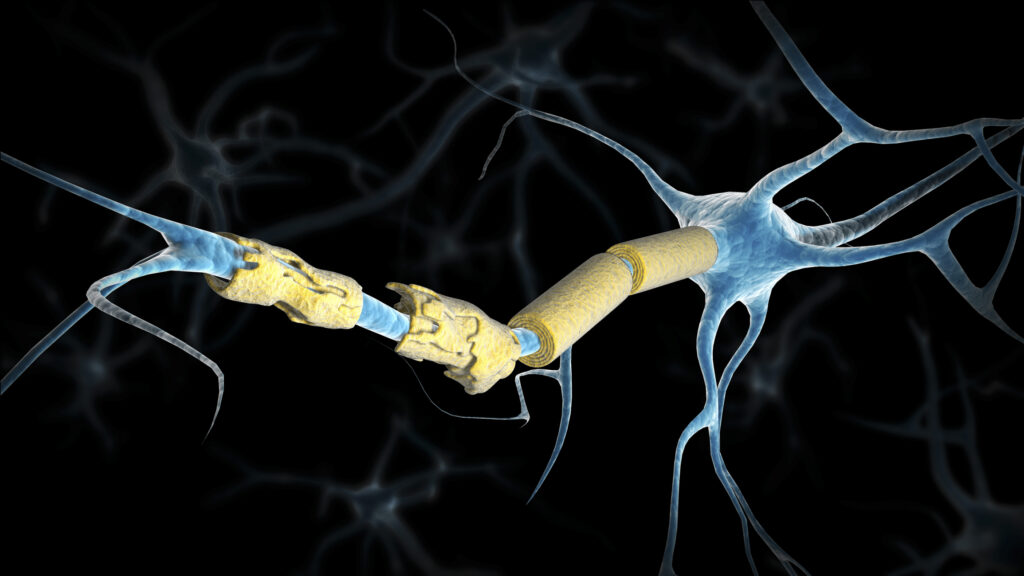Canavan disease (CD) is a fatal genetic leukodystrophy caused by mutations in the ASPA gene, leading to accumulation of N-acetylaspartate (NAA) and breakdown of myelin, the insulating sheath around nerve fibers. Affected children suffer progressive neurological impairment, blindness, seizures, and early death.Until now, treatments have been supportive only. Previous gene therapy efforts targeted neurons but failed to substantially restore white matter or improve long-term outcomes.
MYR-101 targets the cells that matter
A Phase I/II trial (NCT04833907) of MYR-101—an investigational gene therapy using an engineered AAV vector (rAAV-Olig001) that selectively targets oligodendrocytes—is the first approach to aim directly at the myelinating cells in CD. Reporting in Nature Medicine, eight children with confirmed Canavan disease received a single intracerebroventricular dose of the vector.“We designed this vector to go exactly where the pathology is, into oligodendrocytes,” said Paola Leone, PhD, professor of cell biology at Rowan University and lead author of the study. “In 25 years working with this patient population, I have never seen more impressive results, particularly the significant increase in white matter and functional improvement.”
Encouraging biomarker and clinical outcomes
At 12–24 months post-treatment, the researchers reported:
- >80% reduction in CSF NAA concentration (p = 0.0008), indicating restored enzyme activity of ASPA in the brain.
- Increased brain myelination, measured using synthetic MRI (p = 0.0137).
- Improved developmental scores, tracked via the Mullen Scales of Early Learning (p = 0.0171).
“These early findings give hope for modifying the clinical course of a disease previously considered untreatable,” commented Robert Lober, MD, PhD, pediatric neurosurgeon and principal clinical investigator.
Regarding the safety profile, all adverse events were mild and resolved completely. No serious events were attributed to the gene therapy.Christopher Janson, MD, senior author, added: “The novel techniques used in our study, such as myelin quantification with advanced imaging tools, show meaningful biomarker changes—these interim results prove the potential of oligodendrocyte-directed gene therapy for Canavan disease and other white matter disorders.”
Context and implications for leukodystrophies
Established designations—including RMAT, Orphan Drug, Rare Pediatric Disease, and Fast Track—from regulatory agencies recognize the urgency and promise of this therapy. The vector rAAV-Olig001-ASPA also participates in the FDA’s START Pilot Program, intended to accelerate rare disease therapeutics.Prior interim data from seven patients treated up to 24 months revealed similar outcomes: robust NAA suppression and increasing myelin and white matter volumes accompanied by functional gains.
Toward new therapies for white matter disorders
This therapy marks a major advance for CD and potentially for other white matter diseases and metabolic leukodystrophies. By targeting oligodendrocytes directly, MYR-101 addresses the root pathology rather than supporting downstream effects.Leone expressed optimism: “We are now seeing evidence that this targeted approach corrects the underlying disease mechanism.”As the trial continues with expanded follow-up and more participants, the outcomes could reshape how gene therapy is used for demyelinating conditions.

